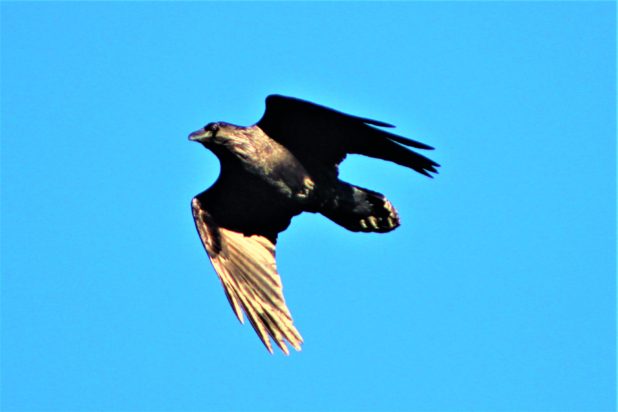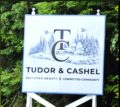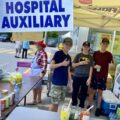Headline News
Connecting with nature through social distancing
April 7, 2020

April 7, 2020
By Nate Smelle
Last week Bancroft This Week reached out to Bancroft Field Naturalist Club president, Terry Bradt to discuss ways for people to make the most of their time while practicing social distancing to prevent the spread of COVID-19.
Smelle: Hi Terry! Thanks for taking the time to give people a few pointers on how they can enjoy their time social distancing.
Bradt: No problem. Thanks for the opportunity!
Smelle: From your experience as a lifetime naturalist who has dedicated an incredible amount of time to observing, and learning about nature, how can people improve their quality of life by taking time to appreciate the natural world while self-isolating and social distancing?
Bradt: I think it is very important to go out and get some sunshine and some fresh air, but we have to do it safely. Getting a bit of exercise outdoors in the sunshine, even if it is in your backyard, can help relieve the winter ‘blahs’ … especially right now to help us cope with the restrictions that have become necessary. Listening to the increasing bird activity, and observing nature’s changes daily seems to help us get away from our own problems for a while, and can become a lifelong passion. Anyone wanting to explore the benefits of nature to our mental and physical health should read some of the works of Richard Louv. Have you heard of him?
Smelle: Yes, I believe so. Isn’t he the author of the book The Last Child in the Woods?
Bradt: Yes, that’s him. That is his seventh book and in it he explains the phrase he coined ‘nature deficit disorder.’ He feels most of us suffer from it, especially children. This is something people can read about, and realize the need for this resurgence of getting back to nature.
Smelle: With so many people now staying home, not driving as often, or shopping as much, Mother Nature is getting a bit of a break as a result of this crisis. Do you think if people use the extra time on their hands to connect with nature it can help give them peace of mind during these uncertain times?
Bradt: Nature is so refreshing! It revitalizes you and it takes your mind off the stupid stuff, which can be very overwhelming and depressing … We are creating less pollution at the moment – at least from vehicles. There is a video on the internet shot over Italy showing the less amount of pollution being produced during this shut down. It was just amazing! When you go out driving now, you don’t see very many cars … it’s refreshing but tragic.
Smelle: You alluded to the importance of children connecting with nature – what is your earliest memory of birdwatching or observing nature?
Bradt: I was extremely lucky to be raised in the country. I always went to one-room country schools until I was in high school. Every spring, my first teacher would take us for a walk on Arbour Day to a nearby woods and show us spring flowers. I never forgot that and I never forgot the names of the plants. I wish she had told me how to identify poison ivy at that time because it was in our schoolyard. I also remember my mother pointing out a bluebird to me, and that really started a lifelong passion of birdwatching. Also, I would spend a lot of time outdoors with one of my cousins who knew a lot more about birds than I did.
Smelle: Did those experiences in nature change the way you looked at the world?
Bradt: The outdoors was always my whole world. I had such a hunger to learn, I read every book that was in that one-room country school. At that time I would observe the brightly coloured birds painted by Audubon and Landsdowne. It wasn’t until much later that I realized that most of these same birds were in Ontario’s forests; flying all the way here to breed, nest, raise their young, and then fly all the way south again. Part of that confusion came from the way they were named. Many of them were named from where they were first identified. For example, there are Nashville warblers and Kentucky warblers. Others were named according to the trees they were seen in, like Myrtle and Magnolia warblers. I never knew at that time that these same birds are found in Ontario.
Learning where these birds are from helped me learn geography. Learning about their migration routes revealed some of the hazards they face on their incredible journeys. And migration is such a mystery still. How is it that birds, like with the robins that nested here last year, end up back in the same backyard, even nesting in the same tree where they did the year before. It is just incredible how they can do that, and I can get lost in a department store [both laughing].
I thrived on being outdoors and having someone identify the plants around me aroused a curiousity in me that is still very much alive. There isn’t enough time to fully learn how complicated nature is, but shows like Dr. David Suzuki’s The Nature of Things sure make learning easier. You never forget those first sightings and first encounters in nature. I am really thankful for being able to live in the country. You don’t have all those distractions that you so in the city. Growing up we didn’t even have television, so nature was it. If I got bored in the house – and I wasn’t in there much – I just went for a walk.
Smelle: Do you believe our physical health is connected to the health of the natural environment?
Bradt: Absolutely! We need healthy food to maintain a healthy body. I think we are going to see a lot of people starting to grow their own vegetables as much as possible this year, because right now we are all learning about the importance of eating healthy food. My own awakening started in the 1980s when I had a pesticide spraying license. I dropped it when I suffered the affects of constant exposure to these poisons. That was when I started learning about the harm that chemical fertilizers do to the soil, which is where are food comes from. I now produce as much compost as I can because the only way to improve the soil safely is through organic means. Healthy food is only one reason why a healthy environment is so important to a healthy body for us.
Smelle: Over the next month or so, what are some species of birds, wildlife and plants that people can look out for in North Hastings?
Bradt: There is so much to see at this time of year. Maple tree buds are enlarging and that will stop the maple syrup season. Shortly after, red and sugar maple trees will flow as well as many other trees such as birch, elm and alder. Leatherwood is a small shrub that you can usually find in sugar bushes around maples. That will flower soon around when the trilliums are coming out. The rest of the spring flowers will follow and then the wild leeks and fiddleheads will show up when the blackflies arrive around mid-May.
The spring migrations of frogs and salamanders will start happening after the first warm rains in April … and that could be within the week, because the ponds are opening up, and both species migrate to the natal ponds where they were hatched. After we get that first warm rain they will be on the move, and it’s about a day after that you start to hear the spring peepers and wood frogs. So that will all be happening in the next week to two weeks. Some spring bird migrants are already here and nesting robins and phoebes. Others are passing through, like fox sparrows and dark-eyed juncos. This is one of the most exciting months to be a nature lover, before the swarm of arrivals in May. The best viewing is just before the tree leaves open up, because you can see the birds really well. There are daily events, so try to get out there every day and be observant.
Smelle: What are some of the species you look forward to seeing come back every year?
Bradt: Every spring I always look forward to hearing the first winter wren in our backyard. They are here as late as November, and show up as early as March, so there is some question whether they might stay here all year. I think it is quite possible because they eat insects and brown creepers stay here, some of them, and they eat insects. So do golden crowned kinglets and they survive all winter, so why not the winter wren.
I enjoy every first sighting of the year, whether it is a bird, butterfly, or salamander. I haven’t seen a salamander yet this year but there was a butterfly here yesterday, and there have been a few flying around since … mourning cloaks, Compton tortoiseshell, eastern comma, and all the butterflies that overwinter. Appreciating nature is about more than just watching birds.
Smelle: Why do you think it is important for people to take time to appreciate nature?
Bradt: I think it is important for us to have a good appreciation of nature because we are completely surrounded by it in our outdoor environment. How we as humans affect our surroundings is critical to our present and our future; and also to the present and future of wildlife and nature. So, the more we can do to promote a healthy environment helps us and the wildlife we like to watch … As much as it is helpful to use an iPad to identify a certain bird or plant that we see, nothing replaces the thrill of a first sighting, or a close encounter like having a flying squirrel launch off my shoulder. The feel and smell of a forest in springtime can only be a physical experience, so get out there and enjoy, but stay safe.
Due to COVID-19, the Bancroft Field Naturalist Club has cancelled or postponed all upcoming events. Anyone wishing to join, and/or support the club by purchasing a bird house for $10, or a bathouse for $20 can contact club president Terry Bradt by email at: hayton_bradt@sympatico.ca; or by visiting their Facebook page.



















